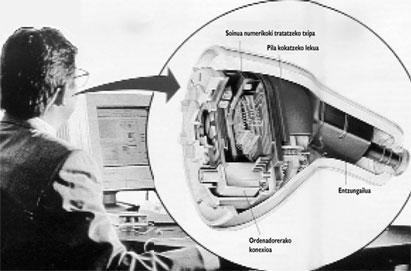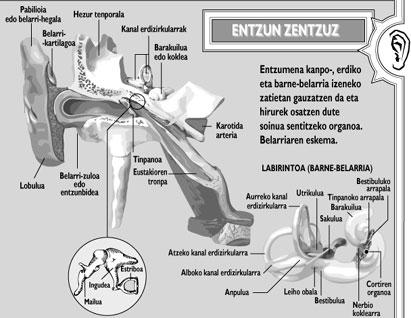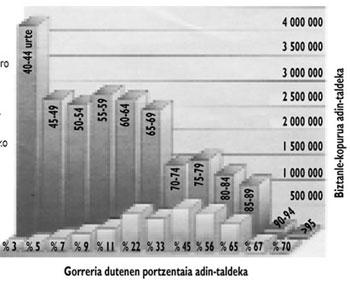New prosthesis for deaf

Today there are thousands and thousands who do not hear well, but most do not know (or do not want to accept) that they do not have good listening. People, if needed, usually have no obstacle to wearing glasses. On the contrary, the use of hearing aids seems to have shame or effect and is a pity, since the sooner hearing defects are treated, the more easily gummed or repaired.
Otherwise, the brain gets used to hearing defects and forgets how to treat sound information instead of compensating for failures. In case of staying in this situation, the implantation of the prosthesis allows to correctly place the “mechanical” state for the ear, but however the ear does not understand well.
The first hearing aids only amplified the sound. Although users heard better, the remedy was not ideal. In fact, to listen and distinguish words, four functional factors must be taken into account: stereo, frequency band, sound intensity and temporal analysis. Of course, the normal amplifier cannot compensate for these four factors.
The new current prostheses simultaneously compensate for more than one of these factors, but remain fixed after the device calibration. However, the PICS (Personal Integrated Communication System) prosthesis that the Phona Suiza house has removed, instead of keeping these parameters fixed, changes them according to the needs, since it treats the sound numerically. The computer treatment allows, in this case, to modify the compensation levels of the device for a better adaptation to the acoustic environment.
As mentioned, one parameter is stereophony. Thanks to stereophony we know where the sound source is, but also our brain uses stereo to differentiate the useful message where there is ambient noise. To realize this, just record the sound that many friends are chatting in a room. When that sound set is heard again, what a person has said cannot be distinguished at all, but when friends dialogued, one clearly distinguished what his neighbor said, despite the background noise. If it is detected that you cannot dialogue in a noisy environment, it must be noted that in our ear there are stereophonic failures. To correct this problem, the “Pics” system uses two prostheses (one for each ear).
Another important factor is the frequency band of the ear. We cannot hear sounds of any frequency. The newborn may receive sounds with frequencies between 15 Hz and 35,000 Hz, but the young normally between 16 and 20,000 Hz and the adult between 20 and 16,000 Hz. Older people, on the other hand, do not usually hear sounds of frequency greater than 8,000 Hz. All this, of course, if it is a person with normal hearing, but who has deafness first stops listening to high frequency sounds (high or high tones). Therefore, the ear does not have the same sensitivity for all sound frequencies.

Deaf people normally damage the ear at high frequencies and many do not hear sounds of frequency greater than 5,000 Hz. Therefore, deafness has difficulty understanding conversations because it does not listen to those high or sharp tones. Thanks to the high frequency we distinguish the syllables “sa”, “za” or “txa”.
When audiometry is performed on the deafness, it is observed from each ear how it hears the sounds of each frequency and the frequency band it listens to. Thus, point by point the sensitivity curve is obtained with respect to the sound spectrum of each ear.
In conventional prostheses, with a mechanism similar to the tonal buttons of the amplifier, the frequency band of the apparatus is adjusted to compensate for the lack of deafness. In the “Pics” system this setting is much finer. The audiogram, a graphical expression of the audiometry, appears on the computer screen, which accurately calculates the correction to be applied to the deafness. This data is transmitted via a connection cable to the prosthesis chip. Therefore, the audiogram is memorized in the prosthesis itself. If there were problems, the “Pics” system would offer the “medical history” of the hearing parameters of the deaf.
Our ear constantly adapts its sensitivity to the level of sound intensity. Intensity or loudness vary, for example, in a room where people are already quiet or the heavy metal concert is already in the room. Our ear adapts, therefore, from low-intensity sounds at the listening threshold to high-intensity sounds that damage the ear. In the ear of deaf people, however, this adaptation is not suitable. From the listening threshold you quickly pass to the pain threshold or you hear the distorted sound. The band of well-heard intensity is therefore limited and it is difficult to understand what was heard.
The deafness prosthesis, therefore, must correct the sound intensity by adapting the level of the environment to the level that the person hears. Also at this point, the computer treatment of the system “Pics” allows a precise correction of the problem.
The fourth parameter to be monitored is the temporary analysis. It has to do largely with adaptation to sound intensity. It consists in distinguishing the silences between several consecutive sounds. Thanks to the analysis of time, our brain distinguishes words from a phrase and the beginnings of each syllable. We distinguish without any difficulty the “te” and “me” syllables that have a different beginning, but who has difficulties to perform a time analysis will not properly separate them. The same goes for the final sounds of the syllable.
This phenomenon is similar to that we are blinded by too large a light. Our eyes need time to get used to the light and our ears also to get used to the changes of sound intensity. Otherwise, some syllables are “disguised.” This is what the “Pics” system does not allow, “guiding” the dynamics of sounds better.
However, another great advantage of the “Pics” system is the possibility of making additional corrections depending on the hearing condition. Conventional electronic filters consist of fixed elements of determined value and their effects are determined and fixed. This new prosthesis, however, has a numerical treatment and if a calculation involves a ringer change, it immediately affects the sound that is heard.
Eight types of corrections can be stored in the “Pics” system. Some allow the word to be heard well in a noisy environment and others music, etc. The possibility of performing eight types of correction is limited by the prosthesis memory. The deaf person, therefore, chooses the types of correction that best suits him for his lifestyle. In addition, you can experiment first by selecting some parameters and then making comparisons with others. It must be said that changes must be made simultaneously in the left and right prosthesis. This problem has been solved with a remote control, since not all the functions fit in the prosthesis, since these are small. That's why a little box is carried in the pocket.
In short, every deaf person is a special case because he has his own deafness and life. We must also take into account the sound state of the environment in which we live. As a result, like glasses, hearing aids should be specially adjusted to each deafness.

Buletina
Bidali zure helbide elektronikoa eta jaso asteroko buletina zure sarrera-ontzian











